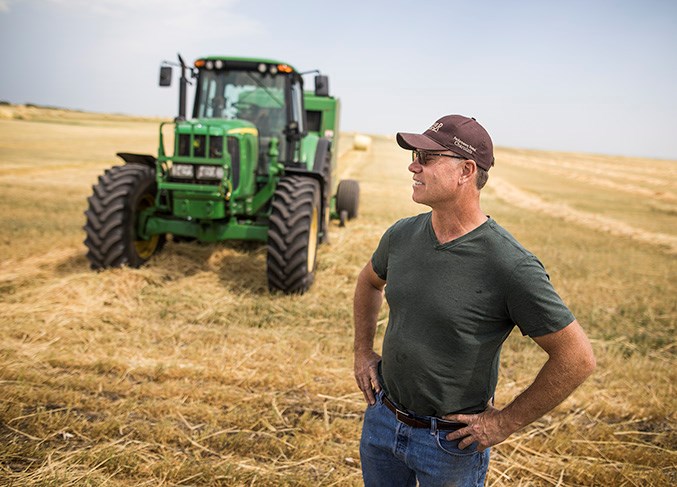It’s looking like an early harvest with promising yield despite hailstorms at the end of July, says a Foothills areal farmer. Leroy Newman, who farms at Gladys Ridge, said he lost about 800 to 900 of his 3,500 acres of crop. Though peas were hit the hardest, hail doesn’t show preference and also took out portions of his other crops as well, he said. “The peas were definitely the worst,” said Newman. “They’re the most susceptible and that’s where the worst of the storm was. Then the wheat, then barley, and then canola.” Now, Newman is busy harvesting the areas of his crops damaged by hail to get some value out of grain feed rather than losing it all together. Luckily, there’s also insurance to help ease the pain of loss, he said. “We’re lucky to have it,” said Newman. “I know our forefathers never had it and if they got hailed out they were out for the year. We’re fortunate to have a good insurance program in Alberta.” That’s the priority for now, but he said the healthy pea crop could be ready for harvest within the week. “It’s coming good,” said Newman. “That rain – the rain that came with the hail – helped a lot. It was incredible, and it saved us. We were in a lot of trouble, too.” It had been such a dry month leading up to the storm on July 23, many of the crops were looking as though they wouldn’t provide a good yield, he said. The Foothills area has been lucky that way, he said. Further south toward Vulcan a lot of the crops are in poor condition, he said. Farmers are out in their fields cutting them down because there’s no grain in them, he said. “They’re putting up grain feed and they’re not even getting a bale an acre,” said Newman. “It’s crazy. You should get four or so an acre if it’s going good.” Prior to rain in the Foothills, there would have been a yield from crops in the area but it would have been poor quality, he said. Grain kernels would have been small and light without a bit of rain to help them grow a little larger. “Now we make a marketable product too, which is really important,” said Newman. Not only did the rain help bulk up crops in the area, it also makes harvest time come a little earlier, he said. Rain speeds up the ripening process, he said. “The plant’s just hanging on, just existing, then when it rains it kind of finishes off growing,” said Newman. “Otherwise it just deteriorates so it has to decide whether to get rid of kernels on the plant.” Peas will come first, around the second week of August, with the rest of the grain crops following by the end of the month, he said. “All I can say is it’s been another crazy year,” said Newman. “The more crazy it is the more it’s the same.”




